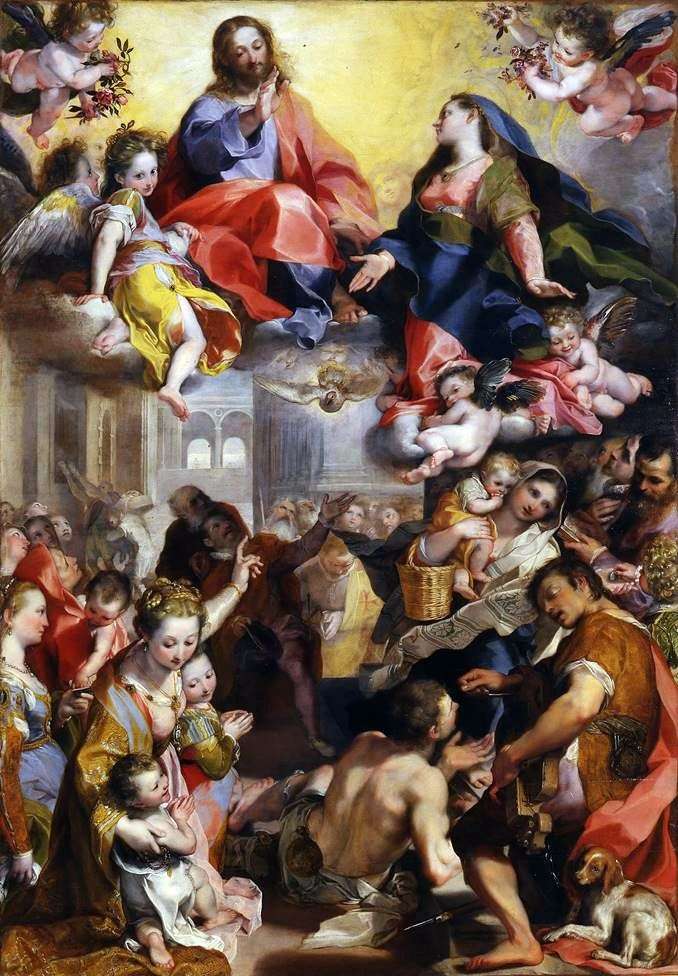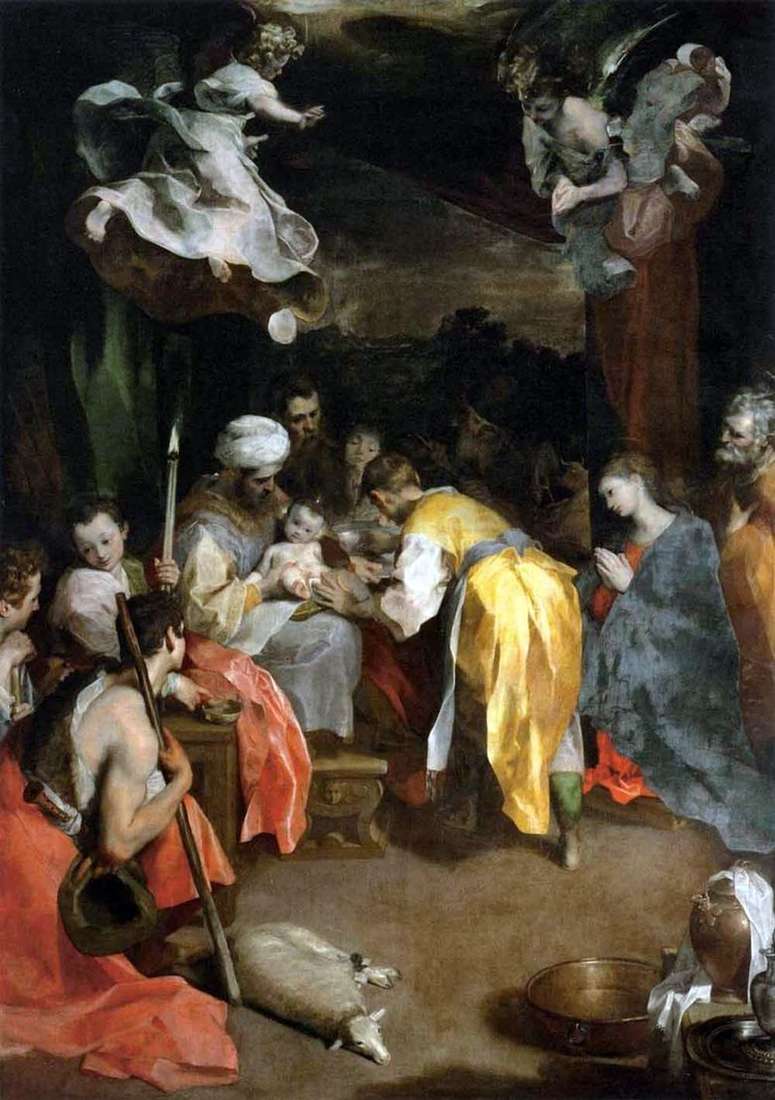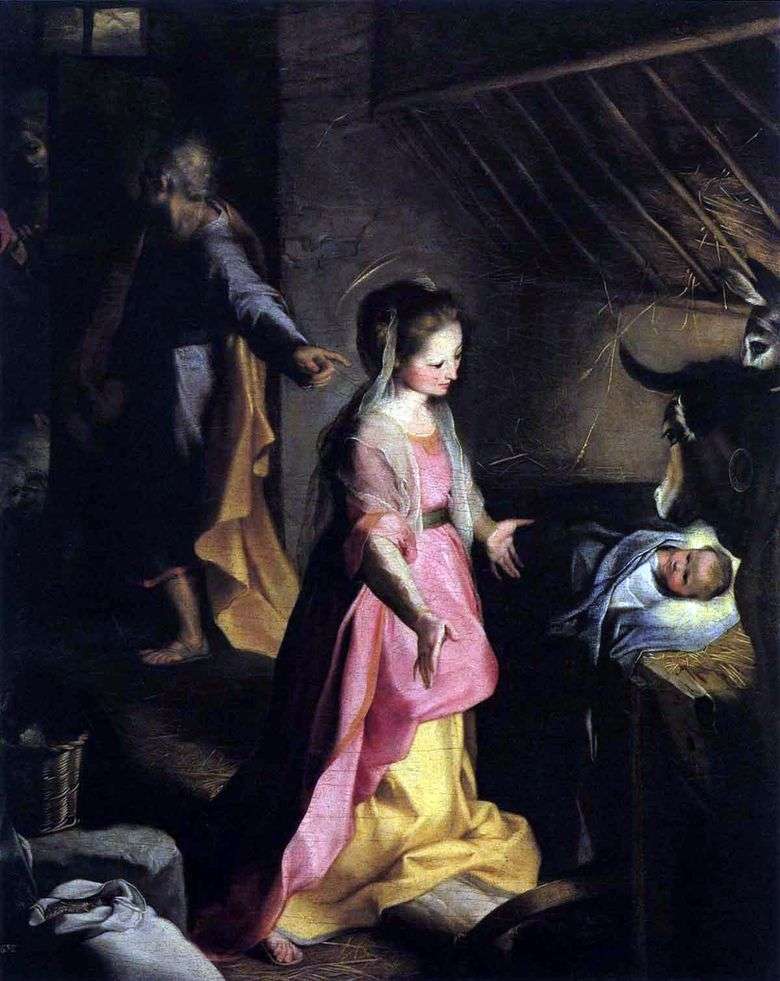
The origin of Baroque is clearly visible on the example of the painting by Federico Barocci, who created large emotionally expressive canvases with many characters and a complex composition. This art flourished in the papal Rome in the era of the Counter-Reformation, when the Catholic Church strove to strengthen its positions in every way and wanted a powerful, appealing to believers painting.
Barocci depicts Christ, before whom the Mother of God kneels and prays to the Son for humanity.
All sorts of people crowd down: a cripple, a blind musician, a noble signor with children, a simple woman with a child. In the picture, the theme of the “seven acts of mercy”, which, according to the teaching of the Catholic Church, lead to salvation, also responded. Therefore, for example, here is depicted a richly dressed boy, who gives alms to the poor.
The whole picture is full of movement, the architecture in the background strangely shifts in space, producing the impression of something illusory. This feature was peculiar to mannerism – the direction from which baroque also grew.
 Madonna del Popolo – Federico Barocci
Madonna del Popolo – Federico Barocci Madonna del popolo – federico barocci
Madonna del popolo – federico barocci Christmas by Federico Barocci
Christmas by Federico Barocci Circumcision by Federico Barocci
Circumcision by Federico Barocci Nativité du Christ – Federico Barocci
Nativité du Christ – Federico Barocci Circuncisión – Federico Barocci
Circuncisión – Federico Barocci Circoncision – Federico Barocci
Circoncision – Federico Barocci Natividad de Cristo – Federico Barocci
Natividad de Cristo – Federico Barocci